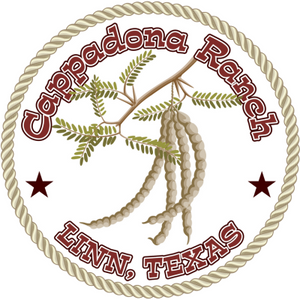Intro
Across the brush country of South Texas, hidden among mesquite trees and native brush, grows a small tree with a big story: the Texas Persimmon (Diospyros texana). Known locally as chapote negro, this hardy native plant has provided food, shade, and beauty for generations. At Cappadona Ranch, we love celebrating the wild plants that make our land unique, and right now, the Texas Persimmon is showing off its dark, sweet fruit.
What Is the Texas Persimmon?

The Texas Persimmon is a small, shrubby tree native to Texas and northern Mexico. Unlike the larger orange persimmons in grocery stores, this variety produces small, black fruits that ripen in late summer (July–September).
• Height: 6–15 feet
• Bark: light gray, smooth, often peeling
• Fruit: round, turns black when ripe, with rich, sweet pulp inside
A Wild South Texas Treat


When ripe, Texas Persimmons are sweet and often compared to dates or figs. Wildlife love them—and people have, too, for centuries. Enjoy them:
• Fresh off the tree
• Cooked down for jams, jellies, or syrups
• In traditional baking
A Plant with History

Indigenous communities used Texas Persimmons for food and as a natural dye—the black juice can stain hands and fabric. Ranch families in South Texas still look forward to late-summer persimmon season just as the mesquite pods wind down.
Why We Love It at Cappadona Ranch
For us, the Texas Persimmon captures the spirit of South Texas: hardy, unassuming, and full of hidden sweetness. Like the mesquite bean, it’s often overlooked yet rich in history and flavor—it reminds us this land is abundant if you know where to look.
How to Spot It (and When to Pick)
• Bark: light gray, smooth, slightly peeling
• Fruit: green when unripe → deep purple-black when ready
• Season: late July through early September
👉 Always wait for fully ripe fruit—unripe persimmons are very astringent (puckery).
Rooted in the Land
We’re on a mission to celebrate South Texas flavors. Explore more stories on our Cappadona Ranch Blog or taste our mesquite-based foods.





